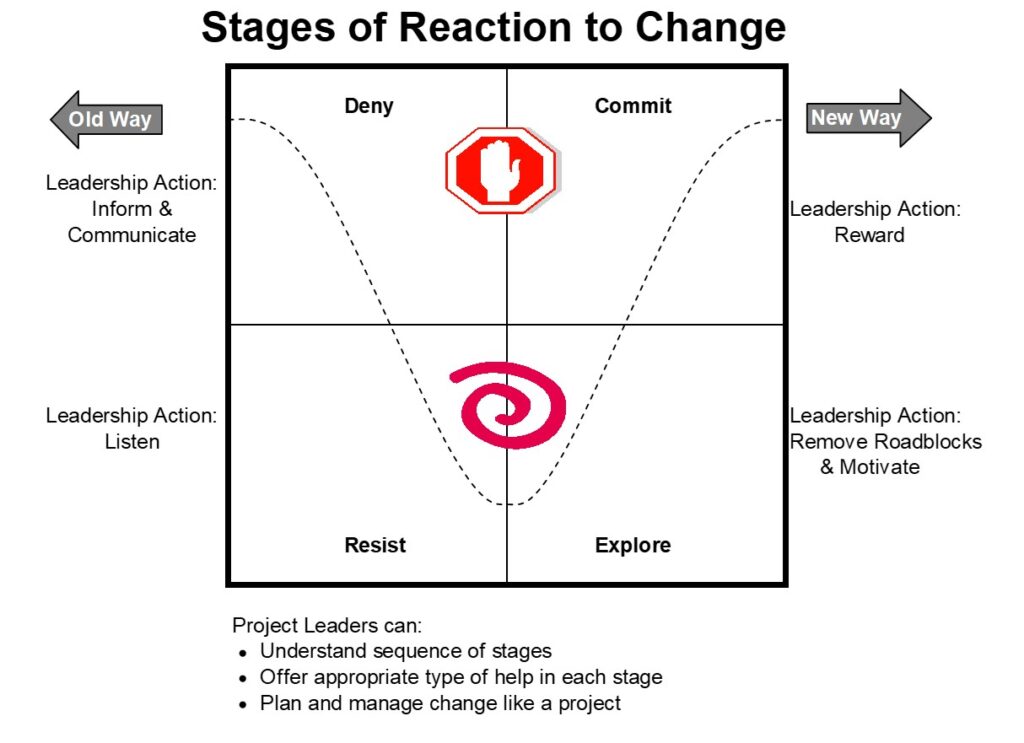Change always swirls around us – it is one of the hallmarks of our era. But it is especially visible in this unprecedented time of pandemic, economic disruption, and pressing social concerns. From an organizational perspective, what new directions must we embrace? How do we take care of employees and customers? Has our use of technology permanently shifted? More ominously, what changes are required for us to survive?
Patterns of Change
The specifics of changes vary widely, but there are patterns in how individuals and organizations react to those changes. Good leaders understand these patterns so they can help people navigate change. In this post, I will reflect on a pattern that individuals go through during changes. I’ll tackle organizational change in an upcoming post.
 When a significant change comes, such as a major redirection of an initiative or project, even the most positive person does not switch instantly to the new way. He or she reacts through a sequence of stages. It is possible to push change through rapidly from the top of the organization down, forcing people to switch quickly from the old way to the new way. However, a “hammer” change like that just shoves people’s reactions underground, so it usually doesn’t last long and it leaves people bitter. Reserve hammer changes for things that are truly urgent, and expect to spend a lot of time and effort cleaning up the mess afterwards.
When a significant change comes, such as a major redirection of an initiative or project, even the most positive person does not switch instantly to the new way. He or she reacts through a sequence of stages. It is possible to push change through rapidly from the top of the organization down, forcing people to switch quickly from the old way to the new way. However, a “hammer” change like that just shoves people’s reactions underground, so it usually doesn’t last long and it leaves people bitter. Reserve hammer changes for things that are truly urgent, and expect to spend a lot of time and effort cleaning up the mess afterwards.
Pioneers and Possibilities
A better approach is to allow time for people go through the stages shown in the diagram. Some people will go through them faster than others, and can be the pioneers that help pull others along behind them. You don’t have to just wait around while people move haphazardly through the stages. The chart shows leadership actions you can take to help people deal with each stage, and then move forward.
Note that the boundary between resistance and exploration is very fluid. People will tend to oscillate back and forth between them. The first time through this oscillation, a person may see one or two silver linings among a long list of objections. On each subsequent cycle, the person will find more possibilities to explore. (If not, they are moving backwards into firmer resistance.) As their excitement about new possibilities builds, they will move more firmly into exploration, and eventually to commitment.